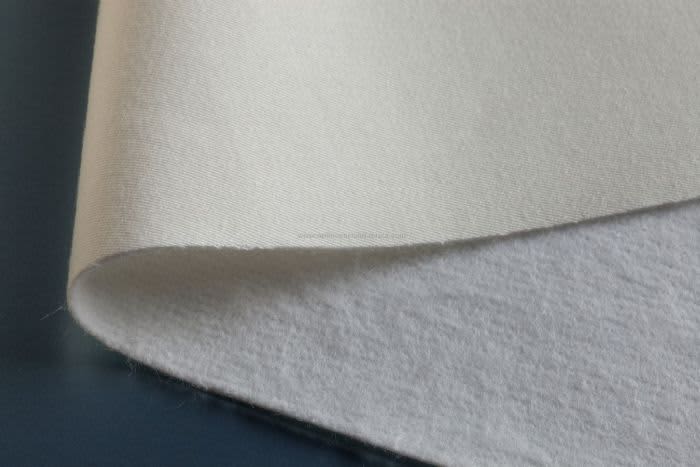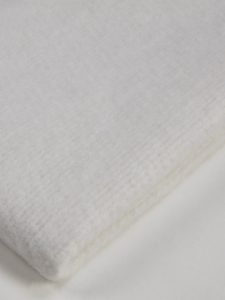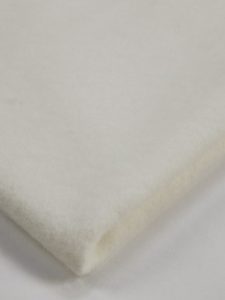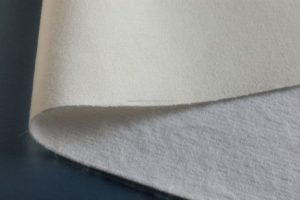
Interlining – A Brief Guide
Curtain Interlining Properties
Interlining is the piece of fabric that is sandwiched between the fabric and the back lining. It gives the curtain extra weight to help it drape more beautifully but it has other purposes including insulation, noise reduction, to reduce transparency, and to give the curtain a softer look and feel. Your curtain maker may just have a standard interlining that he or she uses but you should know that there are several options available, and you may wish to express a preference. In this article I’ll explore the properties and differences between the three main types of interlining that I use.
Insulation
An often overlooked property of curtains in modern days of energy efficiency, but certainly something you would notice on a cold winters day if you have old draughty windows! The interlining in your curtains acts as a blanket, helping to keep the heat in the room, thereby helping to keep your house more energy efficient.
Drape
There are many beautiful fabrics that on their own would produce curtains that are thin and lifeless, but a layer of interlining changes the look and feel of the fabric quite significantly. Interlining makes curtains look thick and sumptuous and they drape or hang more elegantly.
Reduce Light and UV Rays
Obviously one purpose of curtains is to keep a room dark in the morning so we don’t wake up at the crack of dawn. Interlining provides an extra thick layer to your curtains to keep the sunlight at a minimum. Some interlining can also provide UV protection, for example, silk curtains rot in the sunlight so to extend the life of your silk curtains, dommette is used to protect them from UV damage. It is also possible to use blackout interlining if you prefer your curtains or blinds to provide total blackout.
Noise Reduction
Finally, a property of interlining that you probably would not have imagined, is noise reduction. This extra layer of interlining absorbs noises in a room, so would be perfect for a room without carpets, for instance, or a restaurant with lots of chattering, which would otherwise be quite noisy.
Sarille Interlining

Sarille is a light to medium weight synthetic Interlining. It is ideal for use with face fabrics that are also made from synthetic fibres. This is the most economical option, offering good value and performance. It is not a woven fabric but stitch bonded i.e. the fibres are joined together with rows of small stitches. The major advantage of Sarille is that it doesn’t shrink, so in a room where there is a lot of moisture (e.g. kitchen, bathroom or damp house) Sarille would be a good option. It allows the curtain to hang well, but the other options drape better.
Bump Interlining

This is the thickest interlining and is loosely woven fabric made from around 80% cotton and 20% mixed synthetic fibres. It should be used pre-shrunk as the high cotton content has a tendency to shrink in the damp atmosphere around windows. Bump produces great looking interlined curtains as it drapes beautifully. However it is also the hardest to work with as the loose weave results in an unstable fabric that moves and sheds fibres easily. Bump will give your curtains extra body and enhance the draping qualities whilst adding thermal properties to improve insulation.
Dommette Interlining

Dommette is a heavily brushed 100% cotton twill fabric, slightly thinner than Bump. In my opinion it produces a great drape and gives the curtain a beautifully soft blankety feel. I generally use Dommette with stiffer fabrics, like linen, in order to soften the look and feel. I also always use Dommette for silk fabrics; it provides UV protection and prevents the fabric from rotting caused by sunlight.
Bonded Blackout Interlining

Bonded Blackout is a top quality Blackout Lining with Polyester wadding bonded to the reverse side. It is ideal for use in Roman Blinds to prevent ‘sagging’ between the Lining and Interlining layers. It also provides complete blackout which is perfect for bedrooms.
So there you have it! Please do call me if you would like to discuss your soft furnishings project. I would be delighted to help!
![]()
